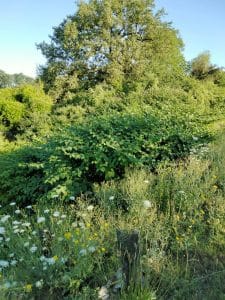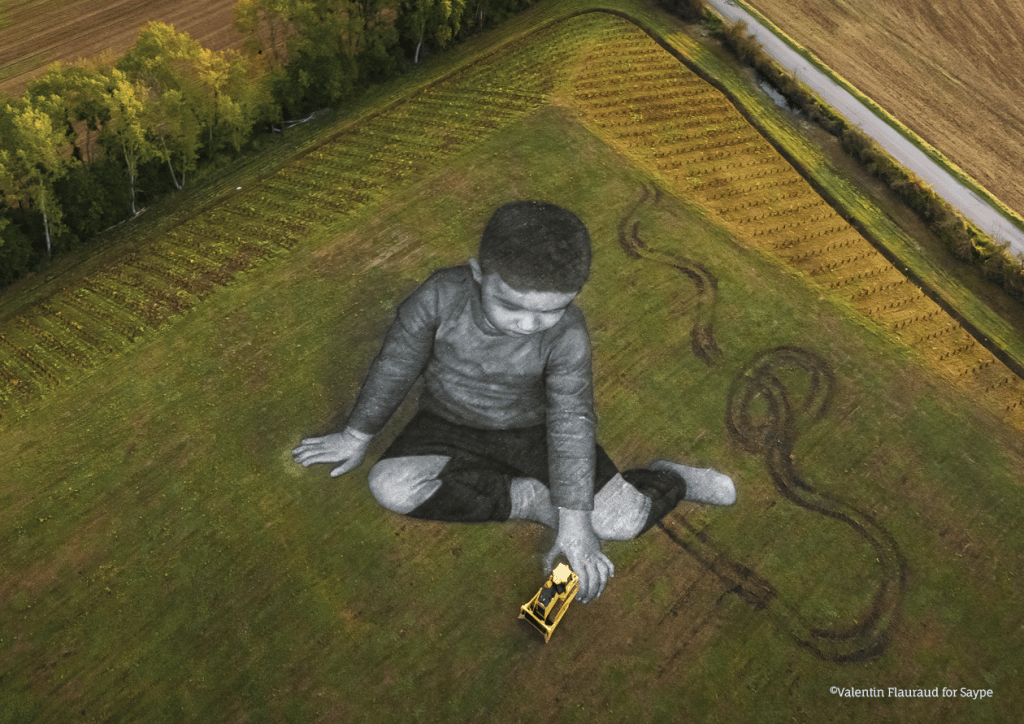What are the conditions of access to ECT sites?
Welcome to ECT,
First, you need to open a customer account with the sales department. You will then be administratively referenced. And you’ll have access to all ECT customer services.
Next, here are the various steps to ensure that the soil and materials excavated from your site can be disposed of at our landfill sites.
1 – Register to your customer area
ECT’s customer extranet is a dedicated, secure area accessible from our website or your cell phone. Registration is fast and free. This site allows you to manage all your activities with our company. You can consult your DAPs, evacuated quantities, unloading slips and invoices in real time.
2- DAP validation
For each of your projects, you need to submit a DAP (Demande d’Acceptation Préalable) application. This request must be approved by ECT before any soil or materials are removed.
PAD requests should be sent to ECT’s Quality Department by e-mail: dap@groupe-ect.com
3- Validation of safety protocols
All our sites are subject to security protocols. The protocol will be sent to you before you visit a site. You’ll need to accept and sign it.
4- Plan your soil inputs
Planning the delivery of your land is mandatory. Before sending your trucks, your request must be validated by the Reservations department: reservation@groupe-ect.com | 01 60 54 57 53 | Monday to Friday, 7 a.m. to 5.30 p.m.
5- Receipt and use of unloading slips
As soon as your reservations have been validated, your unloading slips are available in your customer area. These dematerialized vouchers can be sent by SMS or e-mail , to your carriers. These vouchers take the form of a QR Code. They must be presented at site entrances.
6- Unloading your soil on our sites
All ECT sites are subject to specific access conditions. All information on schedules, access maps and truck types accepted is available on our website on the page,
map and access to the ECT site.
7- Monitoring and control tools.
The Extranet customer area lets you monitor and manage your business in real time.
You have all the information you need to fill in your chronological register and transmit it to the National Register of Waste, Excavated Soil and Sediment (RNDTS), which is mandatory from May 1, 2023.
Other questions
Fertile substrate is a material used to promote plant growth thanks to its richness in nutrients and its ability to provide favorable conditions for root development. It can be natural or artificially created to meet the specific needs of plants in different contexts, such as agriculture, gardening or landscaping projects.
The fertile substrate manufactured by ECT is an eco-responsible alternative to the use of natural topsoil, a precious resource that it is essential to preserve. Produced locally on ECT sites, it meets the challenges of the circular economy by recovering inert soil from the construction industry and compost from green waste.
Main features :
- Preservation of natural resources: Limits importation and use of topsoil.
- Reduced carbon footprint: on-site manufacturing for green and agricultural landscaping.
- Recycling: Use of local materials (inert earth and green compost) with strict control of analysis and traceability standards (NF U 44-551).
- Versatility: Suitable for a variety of uses, including renaturation, afforestation, meadows and even roofing substrates.
ECT’s excavated soil management and reclamation sites are likely to accept materials excavated during the construction of SGP’s Grand Paris Express project, depending on the compatibility between the physico-chemical characterization of the materials and the type of soil authorized on our various sites. With regard to Grand Paris Express soil, a distinction must be made between station excavation soil and tunnel boring machine “sailings”, which require different on-site processing methods.
This is a systematic assessment designed to identify, evaluate and map invasive species present on a construction site. It generally recommends special measures for the treatment and disposal of plants and soil. EVEEs are plant species that have been deliberately or accidentally introduced outside their natural range. Their dissemination is one of the
5 causes of biodiversity collapse.
Invasive alien plant species (IAS) can have a detrimental effect on construction sites, causing delays, additional costs and safety risks. It is therefore important for construction companies to implement measures to manage and control invasive species in order to minimize their impact.
- Alteration of the construction environment: EVEEs can colonize construction zones, hindering construction and development activities. Their rapid growth can disrupt soils, structures and foundations intended for construction.
- Additional costs: The presence of EVEEs can lead to additional costs for construction projects, particularly in terms of the time and resources required to remove these plants, restore disturbed areas or reinforce protection measures.
- Safety risks: Some EVEEs can pose a safety risk to workers on construction sites. For example, fast-growing invasive plants can make surfaces slippery, increasing the risk of falls and accidents.
- Damage to equipment and infrastructure: EVEE roots can damage drainage systems, underground pipes, foundations and other infrastructure, leading to costly repairs and longer construction projects.
- Risk of propagation: Construction sites can act as dispersal vectors for EVEE. Machines, vehicles and construction materials can transport seeds and plant parts from one site to another, encouraging the spread of these invasive species to new habitats.
Invasive Alien Plant Species (IAS) are one of the five causes of biodiversity loss. As a company committed to the OFB, ECT has a triple objective:
- the reduction of their proliferation on its sites
- limiting their spread from customer sites
- the creation of a dedicated offer for the management of construction site soil impacted by EVEEs
ECT has created a booklet to help you identify, learn about, combat and eradicate these species. This guide provides recommendations for each invasive plant:
- Japanese wild buckwheat
- The Butterfly Tree
- Giant Hogweed
- Galéga Officinal
- Ambrosia
- Himalayan Balsam
- The thorny apple
- The American Grape
- Herbs of the Pampa
It is important for site managers to regularly monitor the presence of EVEEs and implement appropriate control measures to limit their spread and impact. Here are the 7 best practices:
- INFORMING OUR CUSTOMERS
and transporters of the risk of inputs into the soil and dissemination on our sites. - MAPPING
impacted areas to measure their evolution. - EVALUATE
the type of intervention to be carried out depending on the plants and their location on the site. - WATCH
regularly to identify the presence of invasive plants. - DELIMIT
to avoid them on foot or with construction equipment. - COMMUNICATE
on our practices and results, with internal and external feedback. - LUTTER
Neutralize invasive exotic plant species by carefully uprooting them or burying them at the bottom of a bin.
Contain invasive exotic plant species by surrounding them with more competitive plants.
Temporarily revegetate bare soil with ground cover seedlings to render it unattractive.
An invasive alien plant species is a plant that is introduced into a new environment where it is not native, and which proliferates aggressively, causing ecological, economic or social damage. These plants may have been deliberately introduced for horticulture, agriculture or other uses, or may have arrived accidentally via international trade, transport or other human activities.
Once established in their new habitat, invasive alien plant species often have a competitive advantage over native species. They can spread rapidly, crowd out native vegetation, disrupt natural ecosystems, reduce biodiversity, alter natural nutrient and water cycles, disrupt ecosystem services and even threaten endangered species.
Controlling invasive alien plant species is a major challenge for biodiversity conservation and ecosystem management in many parts of the world. Prevention, control and eradication measures are often necessary to limit their spread and minimize their harmful impact.

On Sunday September 24, 2023, the ECT site in Villeneuve-sous-Dammartin (77) exceptionally opened its doors for an outdoor escape game. An opportunity for the public to discover the land art work, “L’Œil du Ciel”, designed by Antoine Grumbach and produced by ECT. Earthworks and planting of the second Eye are scheduled for 2025. The site will open its doors to the public at the end of the excavated soil reclamation operation in 2027.
The artist Saype has taken up residence in Annet-sur-Marne (77), on a site rehabilitated by ECT, to create his new lad art work. This ephemeral, eco-responsible fresco entitled “Un jeu d’enfant?” was painted in 3 days using pigments derived from excavated soil. This fresco is no longer visible: it has faded naturally with the weather and the regrowth of ground vegetation. A sign has been installed on the site to commemorate this emblematic achievement.

“Les Yeux du Ciel” is located on the ECT site in Villeneuve-sous-Dammartin, Seine et Marne (77).
It’s a work of land art and aerial art imagined by Antoine Grumbach and created by the ECT company as part of the landscaping for its excavated earth reclamation site. In 2023, L’Œil Ouest was completed by ECT, after 6 months of earthworks and planting. It is visible to air travellers from the nearby Roissy Charles de Gaulle airport. Work on the second eye is scheduled to start in 2025.